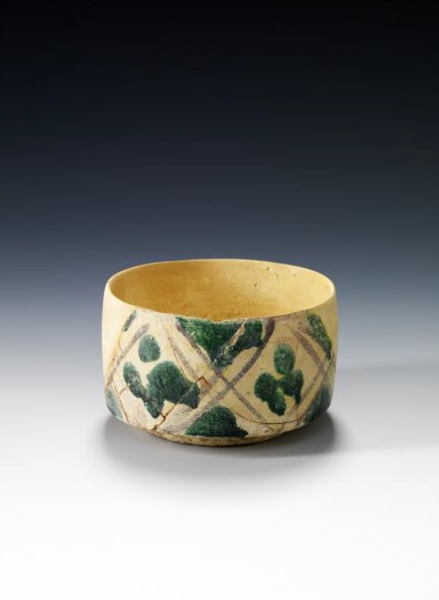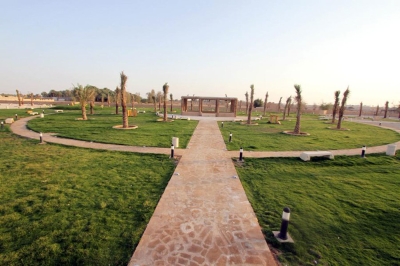

An Ancient Pottery Vessel is a circular-shaped archaeological pottery vessel found in the historical area of al-Rabatha, one of the archaeological sites along the Hajj route from Kufa to Makkah al-Mukarramah. It is located approximately two hundred km east of al-Madinah al-Munawwarah, on the edge of the western Hejaz Mountains in the Kingdom of Saudi Arabia.
Description of the vessel
The pottery vessel is made from light brown clay, relatively pure in composition. It has an open mouth with a plain rim that extends seamlessly from the body walls, along with a flat circular base. Both the interior and exterior surfaces are smoothed, and the exterior surface features plant motifs in gray and green. The vessel was used for storing and consuming liquids.
Dimensions of the vessel
Height: seven cm.
Base diameter: eight cm.
Thickness: five mm.
History of the vessel
This vessel belongs to the Islamic period and dates back to the ninth century. It was discovered in al-Rabatha, a site that has provided significant evidence of Islamic civilization, particularly in urban planning and various industries, including pottery, ceramics, stonework, glassware, metal tools, jewelry, inscriptions, and coins.
The discovery was part of the results of archaeological survey and excavation efforts conducted by the antiquities and museums sector in Saudi Arabia over the past years, as well as the findings of Saudi archaeologists and scientific missions.
The vessel at the Louvre Museum
The pottery vessel is displayed at the National Museum in Riyadh and is registered under the number 349. It was one of the archaeological artifacts selected to participate in the Saudi Archeological Masterpieces Through the Ages Exhibition, held at the Louvre Museum in the French capital, Paris, in 2010. The exhibition featured three hundred original artifacts from various historical periods and materials, originating from different regions of Saudi Arabia. These artifacts were categorized into three chronological groups: prehistoric artifacts, pre-Islamic artifacts, and Islamic artifacts.
Significance of the vessel
This pottery bowl, or vessel, made using the fast-wheel technique, is a fine example of glazed pottery decorated with geometric patterns and abstract plant motifs beneath a colorless transparent glaze. This type of pottery was known in the Levant and Turkey during the ninth and tenth centuries. The vessel serves as evidence of the strong cultural connections between the Arabian Peninsula and major urban centers of the Islamic world.
Related quizzes
Related articles
